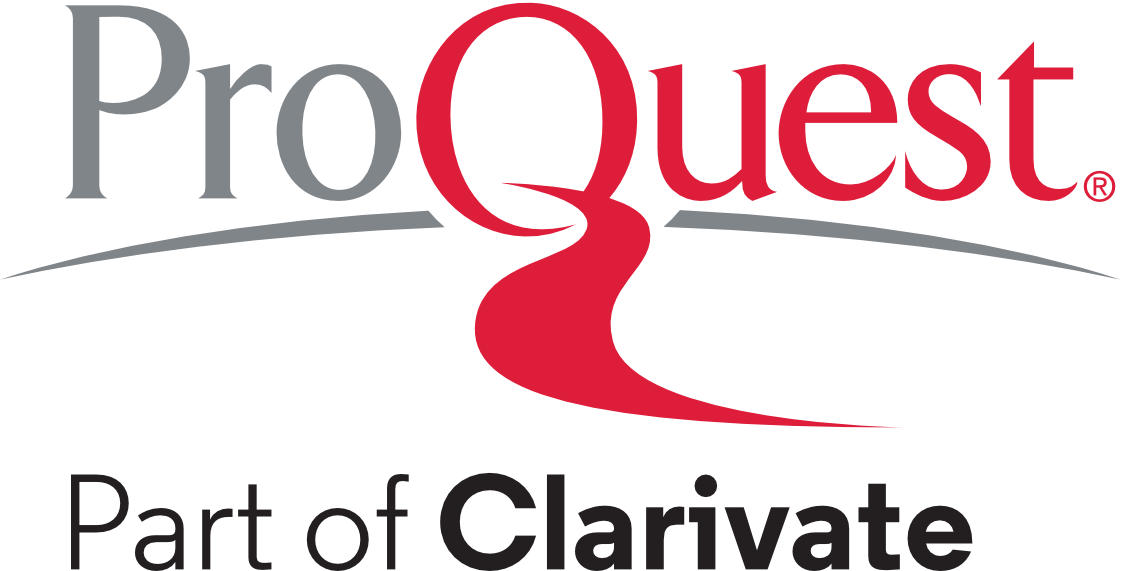Impacto del Trastorno por Déficit de Atención e Hiperactividad en el Comportamiento Empresarial: Un enfoque neurobiológico
Palabras clave:
TDAH; espíritu empresarial; Toma de decisiones; asunción de riesgos; creatividad; Tarea de juego de Iowa; abordaje neurobiológico; cerebro; factores genéticos; factores ambientales.Resumen
El objetivo de este estudio es determinar la relación entre el trastorno por déficit de atención con hiperactividad (TDAH) y el comportamiento emprendedor, especialmente en características como la asunción de riesgos, la creatividad y la toma de decisiones. Se seleccionaron tres grupos de diez personas (5 mujeres; edad 36,3 ± 14,0) mediante plataformas de redes sociales: un grupo con TDAH (cuatro participantes), un grupo de emprendedores (tres participantes) y un grupo de control sin TDAH ni experiencia empresarial (tres Participantes). Se realizaron entrevistas de 10 preguntas, adaptadas a sus respectivos perfiles, de forma individual a través de Zoom. Después de la transcripción de las entrevistas, se extrajeron declaraciones significativas para el análisis de datos. También se instruyó a los participantes para que jugaran Iowa Gambling Task (IGT) desde una plataforma en línea para evaluar la toma de decisiones y la asunción de riesgos. Los datos individuales fueron recopilados, comparados y procesados estadísticamente con Microsoft Excel. Como resultados, la comparación de declaraciones de entrevistas entre personas con TDAH, emprendedores y el grupo de control, en términos de asunción de riesgos, atención y creatividad, mostró que las personas con TDAH pueden aportar características y habilidades únicas al emprendimiento, mientras que los emprendedores tienen estrategias específicas para administrar distracciones y mantener el enfoque. El grupo control enfatiza la organización y el análisis más que la creatividad. Los hallazgos del IGT sugirieron que las personas con TDAH pueden exhibir tendencias impulsivas y dificultad para evaluar las consecuencias a largo plazo de sus acciones. Los emprendedores estaban dispuestos a asumir riesgos calculados para aprovechar las oportunidades y lograr sus objetivos, y también eran conscientes de la necesidad de limitar el riesgo y tomar decisiones prudentes para proteger sus inversiones. El grupo control destacó las diferencias individuales en la asunción de riesgos en individuos seleccionados al azar, sin ninguna condición especial. Mostraron cierta cautela al optar por opciones de bajo riesgo. En conclusión, el estudio subraya la importancia de considerar factores individuales y contextuales en los procesos de toma de decisiones, incorporando aspectos neurobiológicos del TDAH. Aunque los datos disponibles no examinaron directamente la influencia de estos factores en el éxito empresarial, destacan la importancia de comprender las influencias complejas involucradas en la toma de decisiones.
Descargas
Citas
APA. (2013). Diagnostic and Statistical Manual of Mental Disorders: DSM-5TM, 5 Ed. APA.
https://doi.org/10.1176/appi.books.9780890425596
Antoncic, J. A.; Antoncic, B.; Gantar, M.; Hisrich, R. D.; Marks, L. J.; Bachkirov, A. A.; Li, Z.; Polzin, P.; Borges, J. L.; Coelho, A. & Kakkonen, M.-L. (2018). Risk-Taking Propensity and Entrepreneurship: The Role of Power Distance. Journal of Enterprising Culture, 26(01), 1–26.
https://doi.org/10.1142/S0218495818500012
Arnsten, A. F. (2009). The Emerging Neurobiology of Attention Deficit Hyperactivity Disorder: The Key Role of the Prefrontal Association Cortex. The Journal of Pediatrics, 154(5), 1–20.
https://doi.org/10.1016/j.jpeds.2009.01.018
Bacanli, A.; Unsel-Bolat, G.; Suren, S.; Yazici, K. U.; Calli, C.; Aygunes Jafari, D.; Kosova, B.; Rohde, L. A. & Ercan, E. S. (2021). Effects of the dopamine transporter gene on neuroimaging findings in different attention deficit hyperactivity disorder presentations. Brain Imaging and Behavior, 15(2), 1103–1114.
https://doi.org/10.1007/s11682-020-00437-w
Bange, F. (2011). Le devenir du trouble déficit de l'attention/hyperactivité chez l'adulte [Attention deficit hyperactivity disorder outcome in adults]. Archives de Pediatrie, 18(7), 831–834.
https://doi.org/10.1016/j.arcped.2011.03.022
Baron, R. B. (2008). The Role of Affect in the Entrepreneurial Process. JSTOR. The Academy of Management Review, 33(2), 328–340.
https://www.jstor.org/stable/20159400
Barringer, B. & Ireland, D. (2020). Entrepreneurship: Successfully Launching New Ventures, 6 ed. Pearson.
Bechara, A.; Damasio, A. R.; Damasio, H. & Anderson, S. W. (1994). Insensitivity to future consequences following damage to human prefrontal cortex. Cognition, 50(1-3), 7–15.
https://doi.org/10.1016/0010-0277(94)90018-3
Bechara, A.; Damasio, H.; Tranel, D. & Damasio, A. R. (2005). The Iowa Gambling Task and the somatic marker hypothesis: some questions and answers. Trends inn Cognitive Sciences, 9(4), 159–162.
https://doi.org/10.1016/j.tics.2005.02.002
Boot, N.; Nevicka, B. & Baas, M. (2020). Creativity in ADHD: Goal-Directed Motivation and Domain Specificity. Journal of Attention Disorders, 24(13), 1857–1866.
https://doi.org/10.1177/1087054717727352
Bull, P.; Tippett, L. & Addis, D. (2015). Decision making in healthy participants on the Iowa Gambling Task: new insights from an operant approach. Frontiers in Psychology, 6, 1–17.
https://www.frontiersin.org/articles/10.3389/fpsyg.2015.00391/full
Cardon, M. S.; Wincent, J.; Singh, J. & Drnovsek, M. (2009). The nature and Experience of entrepreneurial passion. Academy of Management Review, 34(3), 511–532.
https://doi.org/10.5465/amr.2009.40633190
Curtin, K.; Fleckenstein, A. E.; Keeshin, B. R.; Yurgelun-Todd, D. A.; Renshaw, P. F.; Smith, K. R. & Hanson, G. R. (2018). Increased risk of diseases of the basal ganglia and cerebellum in patients with a history of attention-deficit/hyperactivity disorder. Neuropsychopharmacology, 43(13), 2548–2555.
https://doi.org/10.1038/s41386-018-0207-5
Danielson, M. L.; Bitsko, R. H.; Ghandour, R. M.; Holbrook, J. R.; Kogan, M. D. & Blumberg, S. J. (2018). Prevalence of Parent-Reported ADHD Diagnosis and Associated Treatment Among U.S. Children and Adolescents, 2016. Journal of Clinical Child & Adolescent Psychology, 47(2), 199–212.
https://doi.org/10.1080/15374416.2017.1417860
Davis, B. (2010). Creativity & Innovation in Business 2010 Teaching the Application of Design Thinking to Business. Procedia - Social and Behavioral Sciences, 2(4), 6532–6538.
https://doi.org/10.1016/j.sbspro.2010.04.062
Drucker, P. F. (2006). Innovation and Entrepreneurship. Harper Collins.
Elmaghraby, R. & Garayalde, S. (2022). What is ADHD. American Psychiatric Association.
https://www.psychiatry.org/patients-families/adhd/what-is-adhd
Emond, V.; Joval, C. & Poissant, H. (2009). Structural and functional neuroanatomy of attention-deficit hyperactiviy disorder (ADHD). L'Encéphale, 35(2), 107–114.
https://doi.org/10.1016/j.encep.2008.01.005
Eubig, P. A.; Aguiar, A. & Schantz, S. L. (2010). Lead and PCBs as Risk Factors for Attention Deficit/Hyperactivity Disorder. Environmental Health Perspectives, 118(12), 1654–1667.
https://doi.org/10.1289/ehp.0901852
Faraone, S. (2017). Eight Pictures Describe Brain Mechanisms in ADHD. APSARD.
https://apsard.org/eight-pictures-describe-brain-mechanisms-in-adhd/
Faraone, S.; Asherson, P., Banaschewski, T.; Biederman, J.; Buitelaar, J. K.; Ramos-Quiroga, J. A.; Rohde, L. A.; Sonuga-Barke, E. J. S.; Tannock, R. & Franke, B. (2015). Attention-deficit/hyperactivity disorder. Nature Reviews Disease Primers, 16, 15–32.
https://doi.org/10.1038/nrdp.2015.20
Faraone, S. & Larsson, H. (2019). Genetics of attention deficit hyperactivity disorder. Molecular Psychiatry, 24, 562–575.
https://doi.org/10.1038/s41380-018-0070-0
Fernández-Jaén, A.; López-Martín, S.; Albert, J.; Fernández-Mayoralas, D. M.; Fernández-Perrone, A. L.; Jiménez, M.; Calleja-Pérez, B.; Recio, M.; López-Arribas, S. & Muñoz-Jareño, N. (2015). Cortical thickness differences in the prefrontal cortex in children and adolescents with ADHD in relation to dopamine transporter (DAT1) genotype. Psychiatry Research: Neuroimaging, 233(3), 409–417.
https://doi.org/10.1016/j.pscychresns.2015.07.005
Forquesato, P. (2016). Social norms of work ethic and incentives in organizations. Journal of Economic Behavior & Organization, 128, 231–250.
https://doi.org/10.1016/j.jebo.2016.05.012
Gilman, L. (2021). How to Succeed in Business with ADHD. Additude Magazine.
https://www.additudemag.com/adhd-entrepreneur-stories-jetblue-kinkos-jupitermedia/
Hoogman, M.; Bralten, J.; Hibar, D. P. Mennes, M.; Zwiers, M. P.; Schweren, L. S. J.; van Hulzen, K. J. E.; Medland, S. E.; Shumskaya, E.; Jahanshad, N.; de Zeeuw, P.; Szekely, E.; Sudre, G.; Wolfers, T.; Onnink, A. M. H.; Dammers , J. T.; Mostert, J. C.; Vives-Gilabert, Y.; Kohls, G.; Oberwelland, E.; Seitz, J.; Schulte-Rüther, M.; Ambrosino, S.; Doyle, A. E.; Høvik, M. F.; Dramsdahl, M.; Tamm, L.; van Erp, T. G. M.; Dale, A.; Schork, A.; Conzelmann, A.; Zierhut, K.; Baur, R.; McCarthy, H.; Yoncheva, Y. N.; Cubillo, A.; Chantiluke, K.; Mehta, M. A.; Paloyelis, Y.; Hohmann , S.; Baumeister, S.; Bramati, I.; Mattos, P.; Tovar-Moll, F.; Douglas, P.; Banaschewski, T.; Brandeis, D.; Kuntsi , J.; Asherson, P.; Rubia, K.; Kelly, C.; Di Martino, A.; Milham, M. P.; Castellanos, F. X.; Frodl, T.; Zentis, M.; Lesch, K.-P.; Reif, A.; Pauli, P.; Jernigan, T. L.; Haavik, J.; Plessen, K. J.; Lundervold, A. J.; Hugdahl, K.; Seidman, L. J.; Biederman, J.; Rommelse, N.; Heslenfeld, D. J.; Hartman, C. A.; Hoekstra, P. J.; Oosterlaan, J.; von Polier, G.; Konrad, K.; Vilarroya, O.; Ramos-Quiroga, J. A.; Soliva, J. C.; Durston, S.; Buitelaar, J. K; Faraone, S. V.; Shaw, P.; Thompson, P. M. & Franke, B. (2017). Subcortical brain volume differences in participants with attention deficit hyperactivity disorder in children and adults: a cross-sectional mega-analysis. The Lancet Psychiatry, 4(4), 310–319.
https://doi.org/10.1016/s2215-0366(17)30049-4
Hultman, C.; Tjernström, N.; Vadlin, S.; Rehn, M.; Nilsson, K. W.; Roman, E. & Åslund, C. (2022). Exploring decision-making strategies in the Iowa gambling task and rat gambling task. Frontiers in Behavioral Neuroscience, 16, 1–18.
https://doi.org/10.3389/fnbeh.2022.964348
Khalid, S. & Sekiguchi, T. (2018). The role of empathy in entrepreneurial opportunity recognition: An experimental study in Japan and Pakistan. Journal of Business Venturing Insights, 9, 1–9.
https://doi.org/10.1016/j.jbvi.2017.11.001
Korber, S. & McNaughton, R. B. (2018), Resilience and entrepreneurship: a systematic literature review, International Journal of Entrepreneurial Behavior & Research, 24(7), 1129–1154.
https://doi.org/10.1108/IJEBR-10-2016-0356
Lazear, E. P. (2005). Entrepreneurship. Journal of Labor Economics, 23(4), 649–680.
https://doi.org/10.1086/491605
Lerner, D.; Verheul, I. & Thurik, R. (2019). Entrepreneurship and attention deficit/hyperactivity disorder: a large-scale study involving the clinical condition of ADHD. Small Business Economics, 53(2), 381–392.
https://doi.org/10.1007/s11187-018-0061-1
Lichtenstein, P.; Carlström, E.; Råstam, M.; Gillberg, C. & Anckarsäter, H. (2010). The Genetics of Autism Spectrum Disorders and Related Neuropsychiatric Disorders in Childhood. American Journal of Psychiatry, 167(11), 1357–1363.
https://doi.org/10.1176/appi.ajp.2010.10020223
NIH. (2007, November 12). Brain Matures a Few Years Late in ADHD, But Follows Normal Pattern. National Institutes of Health.
Shaw, M.; Hodgkins, P.; Caci, H.; Young, S.; Kahle, J.; Woods, A. G. & Arnold, L. E. (2012). A systematic review and analysis of long-term outcomes in attention deficit hyperactivity disorder: effects of treatment and non-treatment. BMC Medicine, 10, 1–15.
https://doi.org/10.1186/1741-7015-10-99
Shaw P.; Eckstrand, K.; Sharp, W.; Blumenthal, J.; Lerch, J. P.; Greenstein, D.; Clasen, L.; Evans, A.; Giedd, J. & Rapoport, J. L. (2007). Attention-deficit/hyperactivity disorder is characterized by a delay in cortical maturation. Proceedings of the National Academy of Sciences, 104(49), 19649–19654.
https://doi.org/10.1073/pnas.0707741104
Seidman, L. J.; Valera, E. M. & Makris, N. (2005). Structural brain imaging of attention-deficit/hyperactivity disorder. Biological Psychiatry, 57(11), 1263–1272.
https://doi.org/10.1016/j.biopsych.2004.11.019
Sônego, M.; Meller, M.; Massuti, R.; Campani, F.; Amaro, J.; Barbosa, C. & Rohde, L. A. (2021). Exploring the association between attention-deficit/hyperactivity disorder and entrepreneurship. Brazilian Journal of Psychiatry, 43(2), 174–180.
https://doi.org/10.1590/1516-4446-2020-0898
Sprich, S.; Biederman, J.; Crawford, M. M.; Mundy, E. & Faraone, S. V. (2000). Adoptive and Biological Families of Children and Adolescents With ADHD. Journal of the American Academy of Child and Adolescent Psychiatry, 39(11), 1432–1437.
https://doi.org/10.1097/00004583-200011000-00018
Thapar, A.; Holmes, J.; Poulton, K. & Harrington, R. (1999). Genetic basis of attention deficit and hyperactivity. British Journal of Psychiatry, 174(2), 105–111.
https://doi.org/10.1192/bjp.174.2.105
Verheul, I.; Block, J.; Burmeister-Lamp, Thurik, K. R.; Tiemeier, H. & Turturea, R. (2015). ADHD-like behavior and entrepreneurial intentions. Small Business Economics, 45, 85–101.
https://doi.org/10.1007/s11187-015-9642-4
Villanueva, E. & Martins, I. (2022). Overconfidence, fear of failure, risk-taking and entrepreneurial intention: The behavior of undergraduate students. Tec Empresarial, 16(3), 16–33.
https://dx.doi.org/10.18845/te.v16i3.6355
Yeh, C.-W.; Hung, S.-H. & Chang, C. Y. (2022). The influence of natural environments on creativity. Frontiers in Psychiatry, 13, 1–13.
https://doi.org/10.3389/fpsyt.2022.895213
Zacharakis, A. & Shepherd, D. A. (2001). The nature of information and overconfidence on venture capitalists’ decision making. Journal of Business Venturing, 16(4), 311–332.
Descargas
Publicado
Cómo citar
Número
Sección
Licencia
Derechos de autor 2023 Journal of Applied Cognitive Neuroscience

Esta obra está bajo una licencia internacional Creative Commons Atribución-NoComercial-SinDerivadas 4.0.
Usted es libre de:
1. Compartir - copiar y redistribuir el material en cualquier medio o formato.
2. El licenciante no puede revocar estas libertades siempre que usted respete los términos de la licencia.
Bajo los siguientes términos:
1. Atribución - Usted debe dar el crédito apropiado, proporcionar un enlace a la licencia, e indicar si se hicieron cambios. Puede hacerlo de cualquier manera razonable, pero no de forma que sugiera que el licenciante le respalda a usted o a su uso.
2. NoComercial - No puede utilizar el material con fines comerciales.
3. NoDerivados - Si remezcla, transforma o construye sobre el material, no puede distribuir el material modificado.
4. Sin restricciones adicionales - Usted no puede aplicar términos legales o medidas tecnológicas que restrinjan legalmente a otros de hacer cualquier cosa que la licencia permita.


 English
English
 Español (España)
Español (España)










